Using Visual Studio Code and SSH
VS Code provides a convenient mechanism to connect remotely to the CS Linux servers from inside VS Code, using SSH. This means you can run VSCode on your personal computer to edit files that live in the CS Linux servers, as well as interact with those files from a terminal built into VSCode (e.g., to run your code).
In this page, we will specifically explain how to connect to the CS Linux servers. We assume that you are already familiar with SSH; if you are not, please make sure to read the Remote SSH Access page.
Server assignments
Some classes, like CMSC 14100, use a different set of servers than the ones listed here. If you are in such a class, you should skip this section, and follow the instructions provided by your instructor(s).
In the instructions below, you will be asked to connect to a Linux
server. The main linux server (linux.cs.uchicago.edu) acts as a front
end for specific linux machines (named linux1.cs.uchicago.edu
through linux7.cs.uchicago.edu). VS Code works best when connected
with a specific machine rather than to the front end.
We would like to avoid having everyone using
linux1.cs.uchicago.edu, so we suggest you connect
to one of the following servers, based on the first
letter of your CNetID:
A,B |
linux1.cs.uchicago.edu |
C,D,E,F |
linux2.cs.uchicago.edu |
G,H,I,J |
linux3.cs.uchicago.edu |
K,L,M |
linux4.cs.uchicago.edu |
N,O,P,Q,R |
linux5.cs.uchicago.edu |
S,T,U,V |
linux6.cs.uchicago.edu |
W, X, Y, Z |
linux7.cs.uchicago.edu |
For example, Anne Rogers would use linux1.cs.uchicago.edu, because
her CNetID (ar0r) starts with an A, while Hannah Morgan would
use linux3.cs.uchicago.edu because her CNetID (hmmorgan)
starts with an H.
In the instructions below, you will be asked to replace username
with your CNetID and LINUX_SERVER with your assigned linux server.
For example, if the text says run the command:
ssh username@LINUX_SERVER
Anne Rogers would run:
ssh ar0r@linux1.cs.uchicago.edu
because her CNetID (username) is ar0r and her assigned linux
server is linux1.cs.uchicago,edu.
Remotely connecting to the CS Linux servers
You will be able to use Visual Studio Code to connect remotely to the Linux computers on campus to (1) use the terminal (to execute shell commands, compile and run code, run automated tests, etc.), and (2) to edit text files (usually code).
Open Visual Studio Code now.
Initial setup
You only need to follow the steps in this section once (or more accurately, once per computer that you will use to connect remotely). If you’ve already done this part, you can continue to “Connecting”.
First, you will need to install an extension that will allow VS Code to use SSH. In the left sidebar of VS Code, there is an icon consisting of four squares, with one square separated off from the other three. This is the icon for VSCode extensions. Click it (alternatively, you can press Ctrl-Shift-X, or Command-Shift-X on macOS).
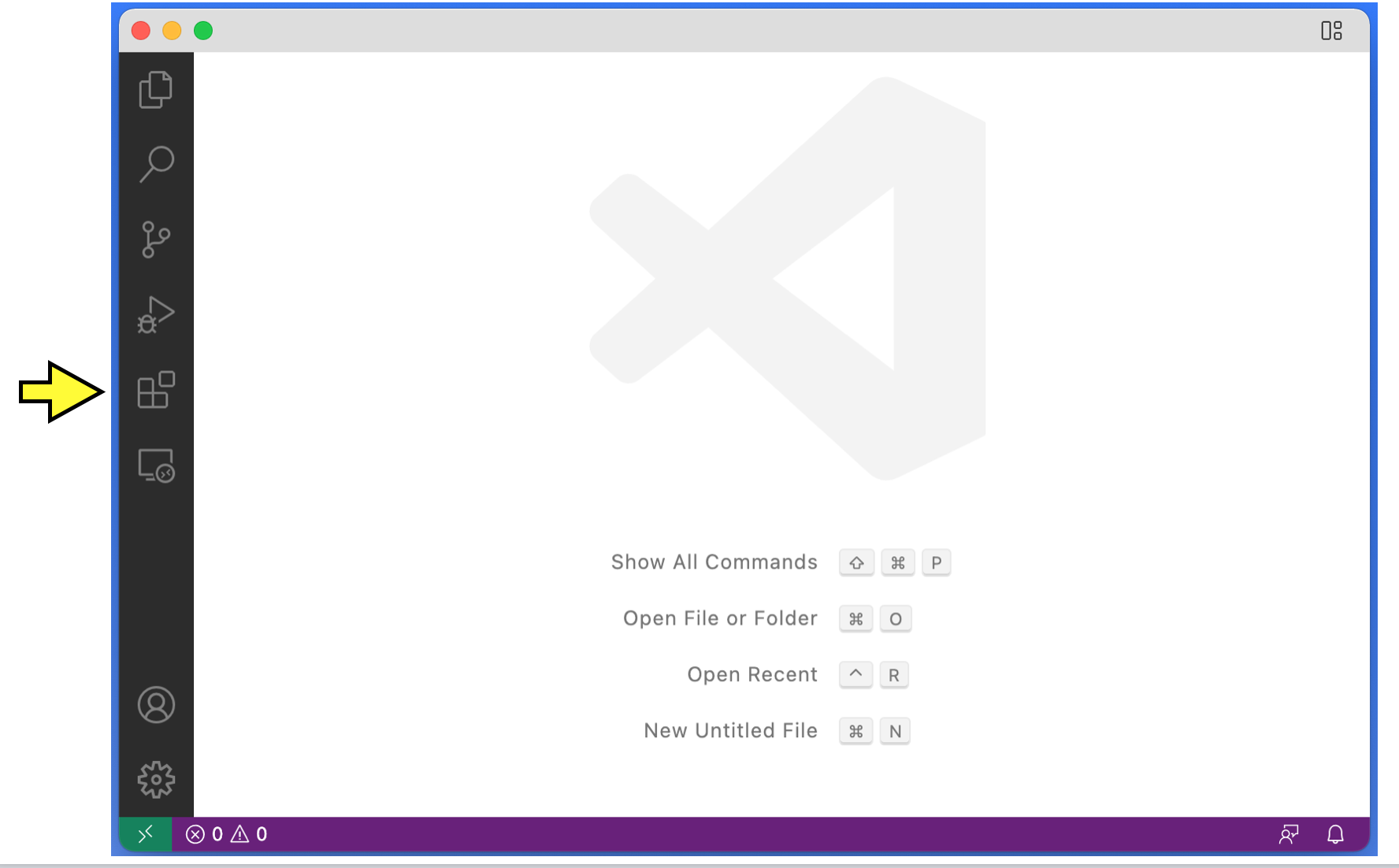
This opens the Extensions panel. From here, you can search for and install extensions. Search for the “Remote - SSH” entry and click “Install”. Below you can find images of the search and of the extension.
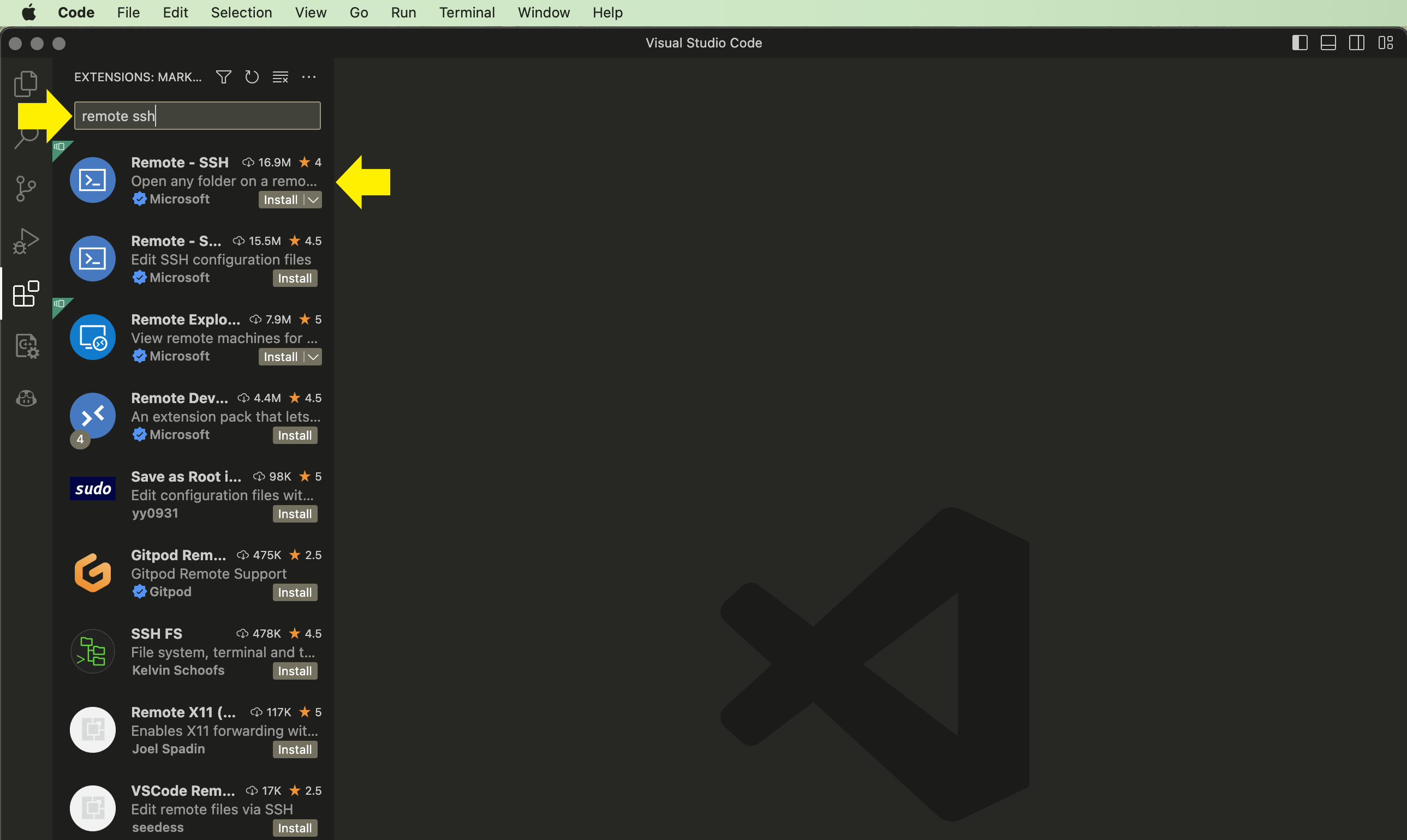
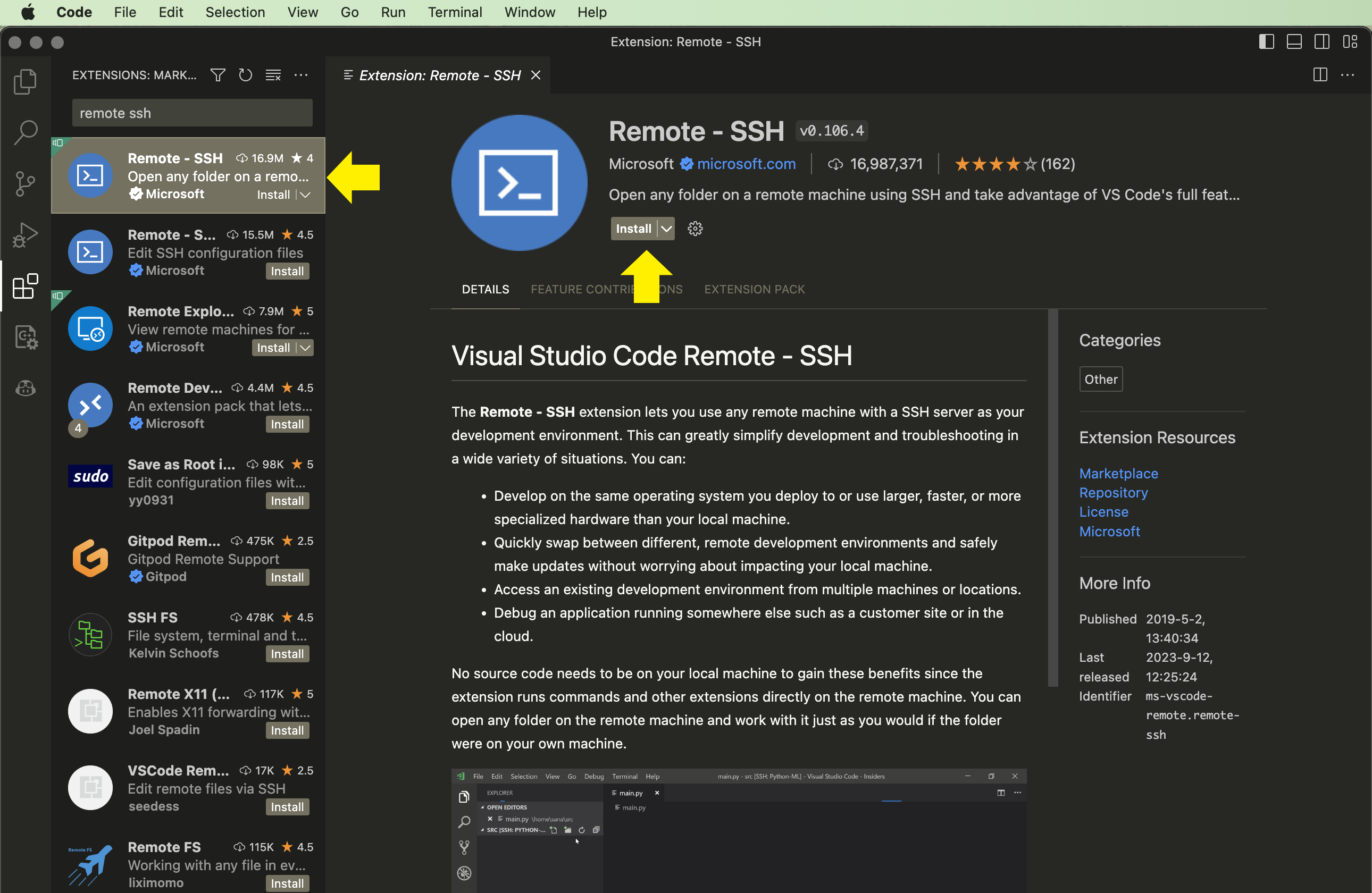
Once you do so, there should be a green rectangle with an icon that looks like ><, but skewed in the lower-left corner of VSCode. Click on this icon.
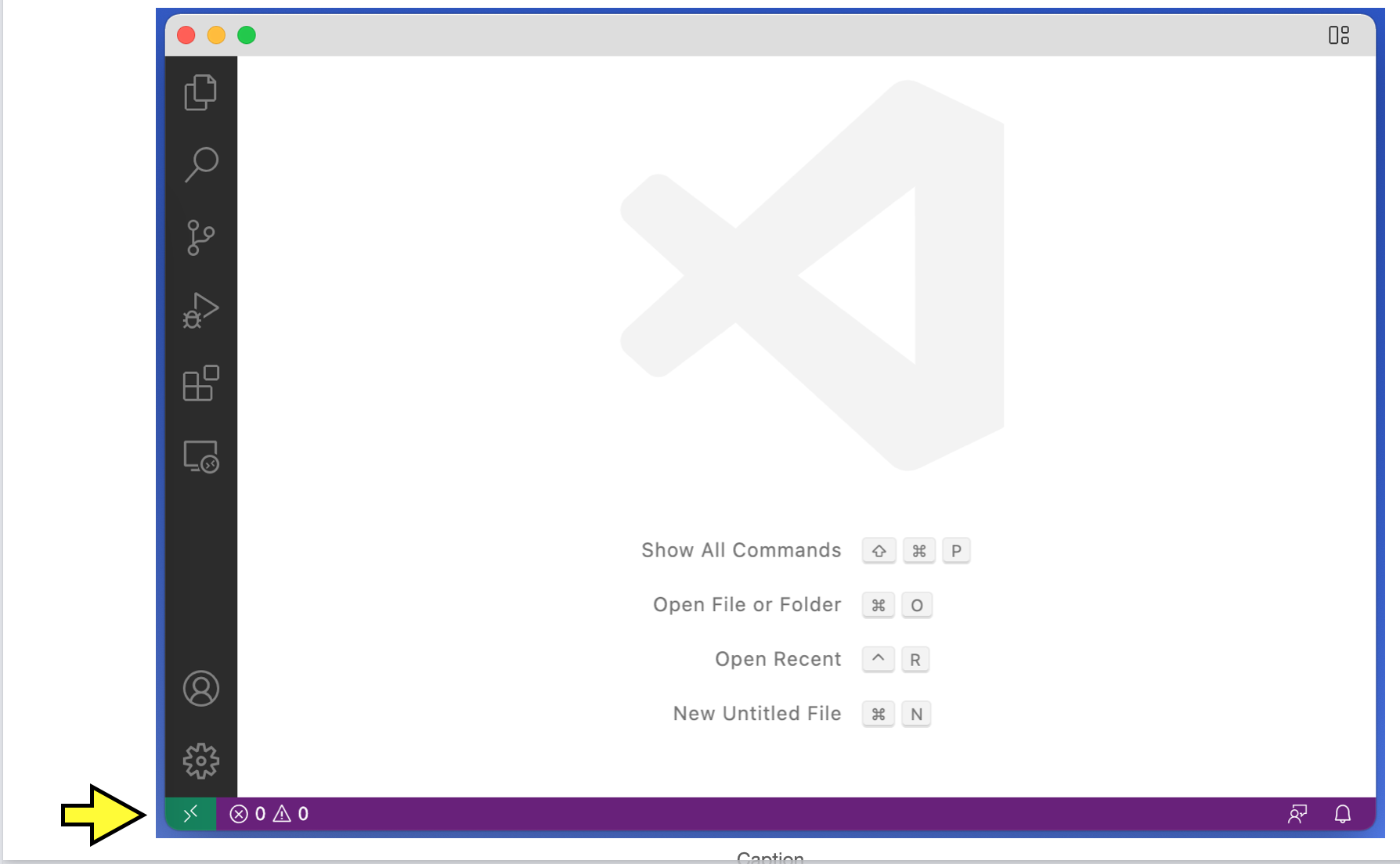
In the menu that appears, click Remote-SSH: Connect to Host….
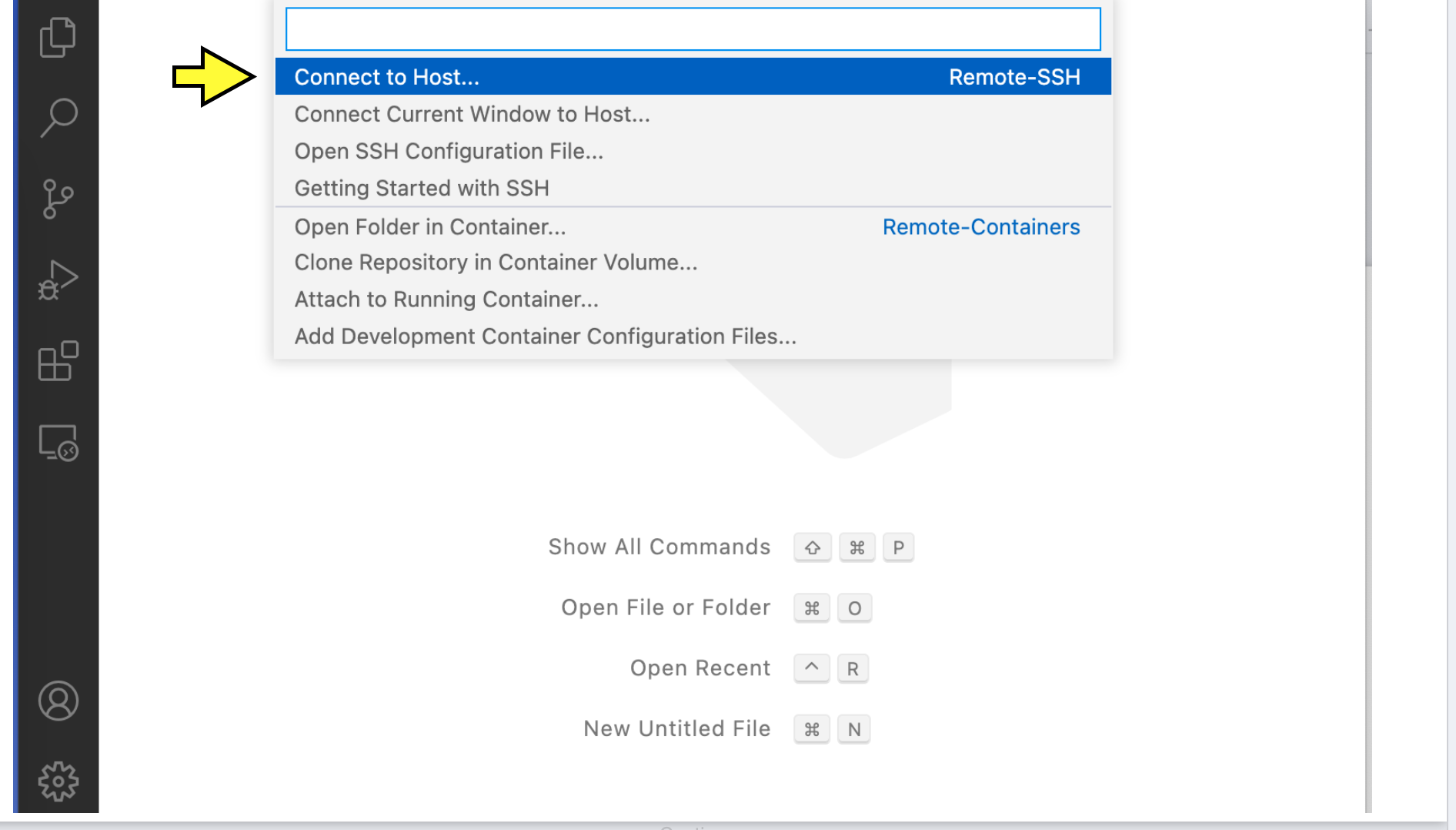
You should see the heading Select configured SSH host or enter user@host.
Click + Add New SSH Host….
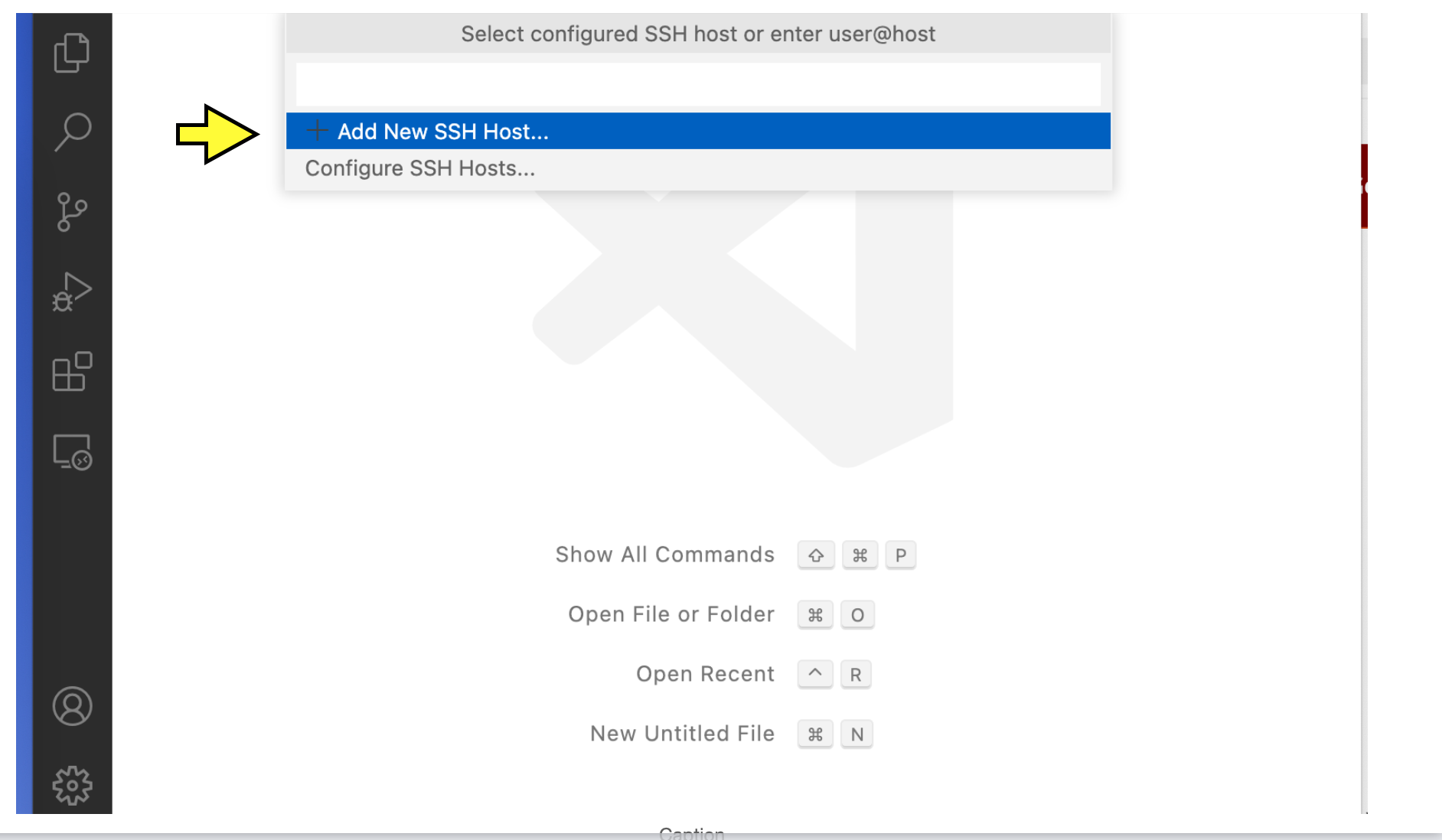
A text box will appear with the heading Enter SSH Connection Command. In the box, type
ssh username@LINUX_SERVER
with username replaced by your CNetID and LINUX_SERVER is replaced with your assigned Linux server, and press enter. This example uses Anne Rogers’ CNetID and assigned Linux server. Make sure to use your CNetID and assigned Linux server.
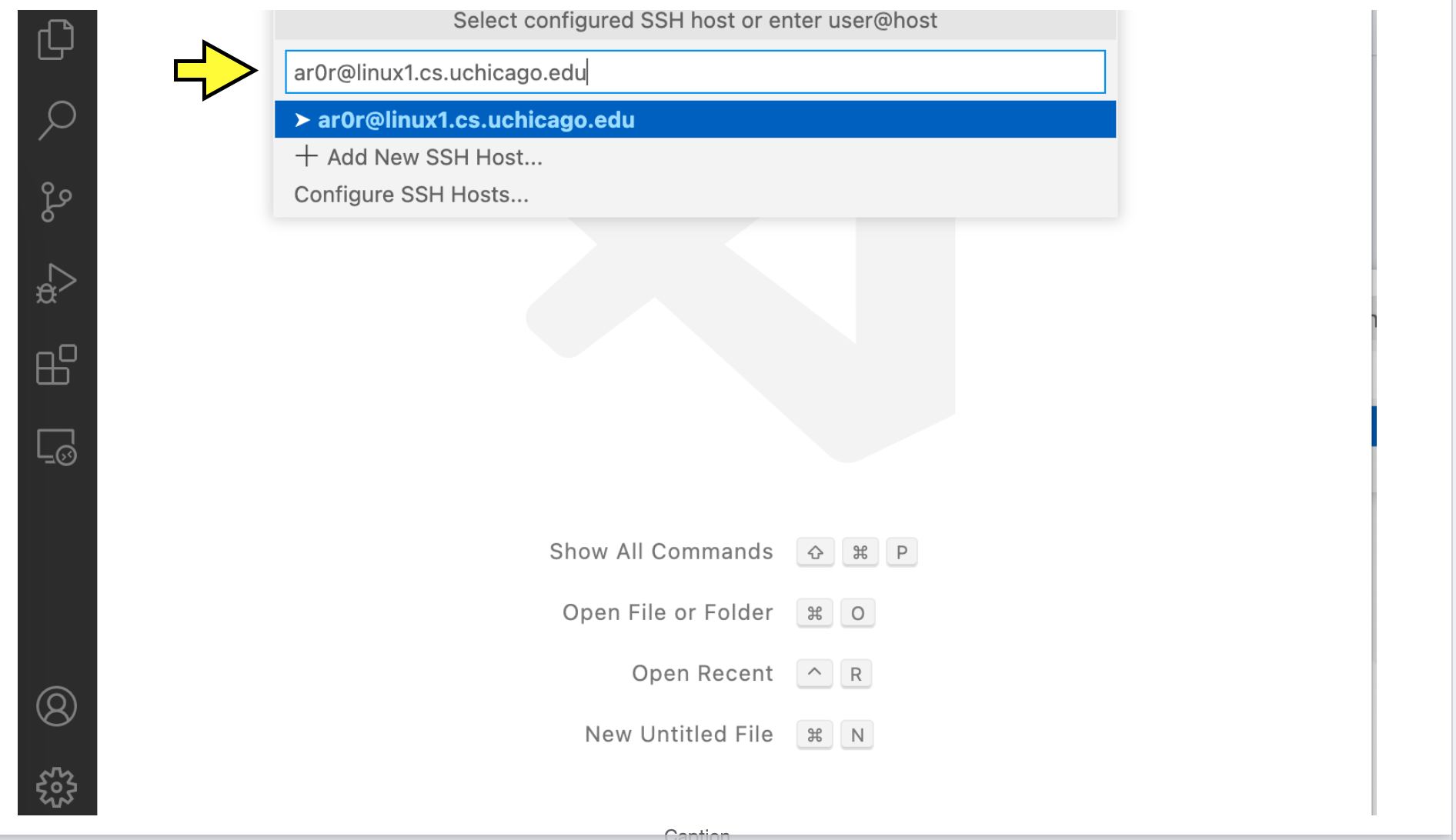
Next, you will see the heading Select SSH configuration file to update. Press enter to select the first option (which should contain the string “User” or “home” and the username you use on your laptop).
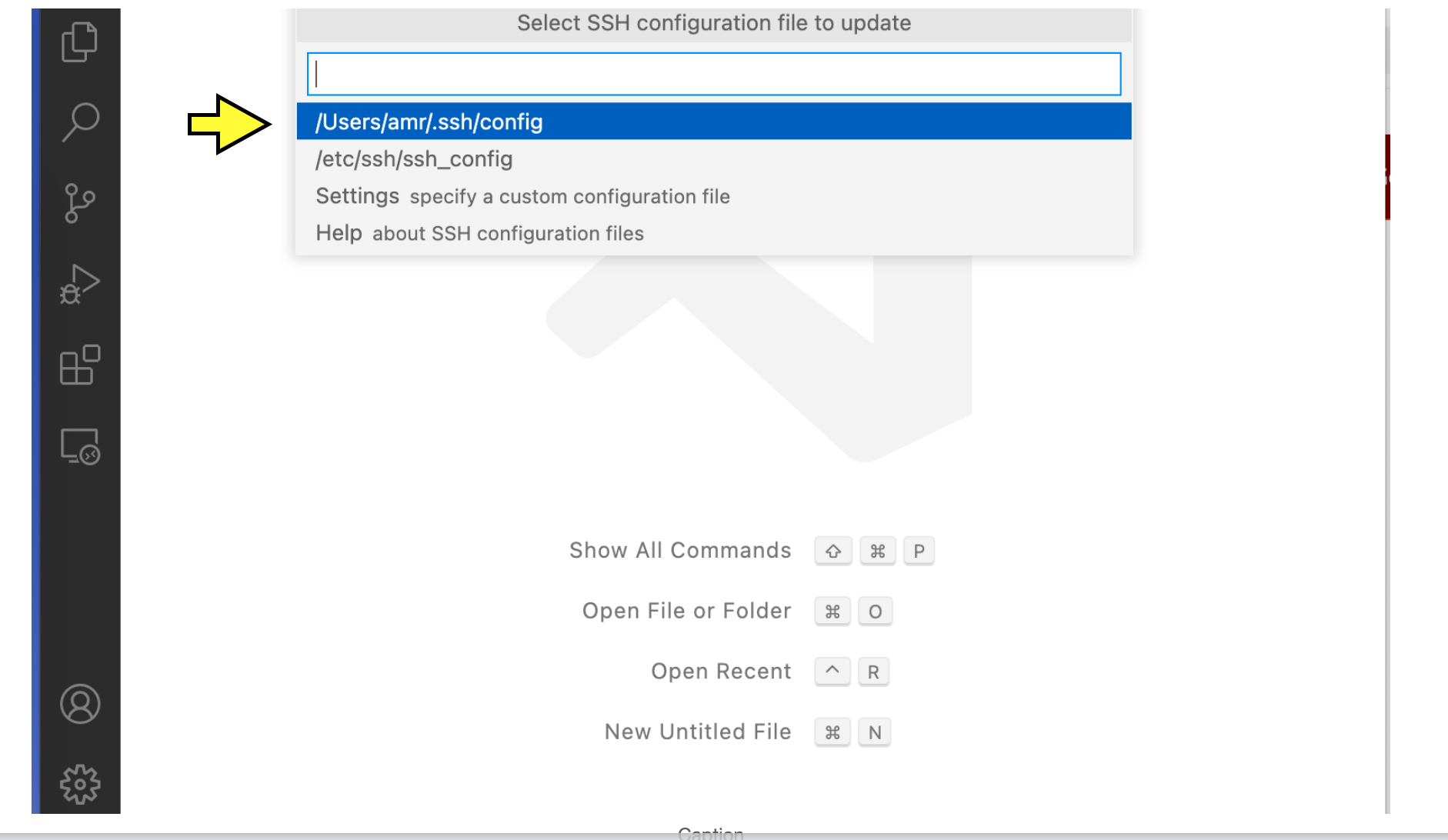
If you see a a pop-up that looks like this:
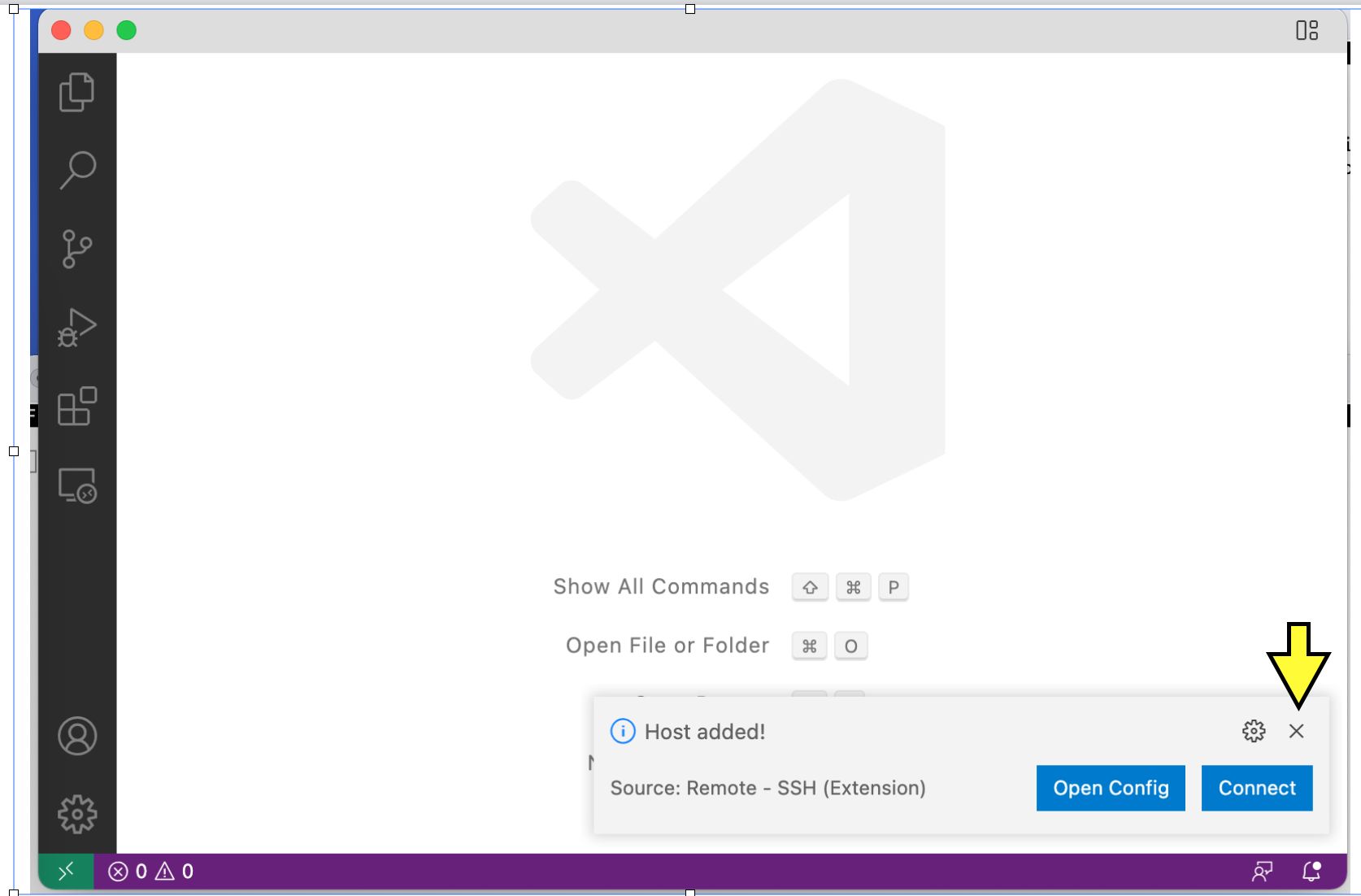
click the x to make it go away. (Don’t connect just yet.)
You are ready to connect.
Connecting
Click the green rectangle in the lower-left corner with the >< icon. Click Remote-SSH: Connect to Host…. You should see the heading Select configured SSH host or enter user@host. This time, you should see the option LINUX_SERVER (where LINUX_SERVER is your assigned linux server) (if not, you should retry “Initial Setup”). Click on this option.
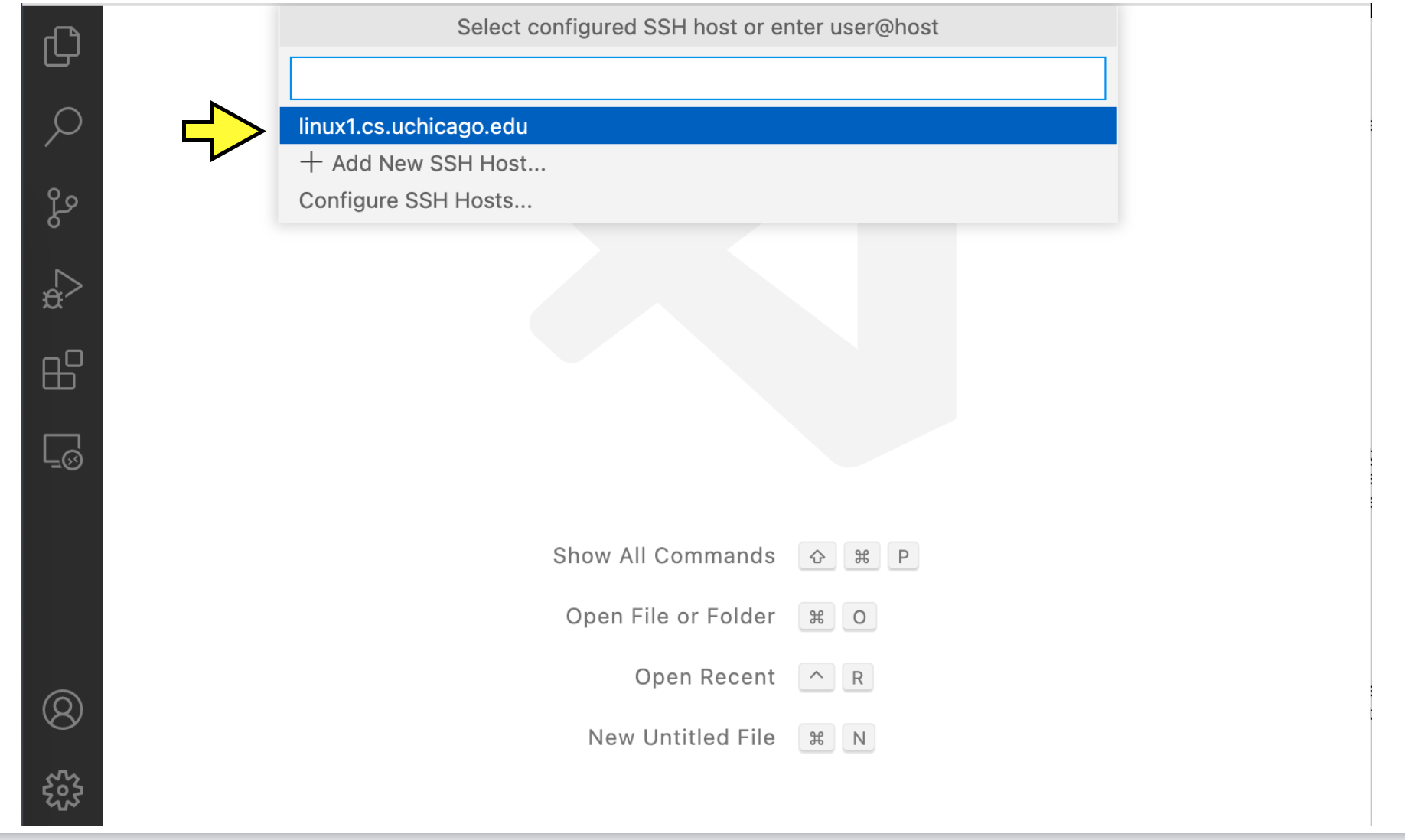
A new VSCode Window will open. After a moment, you will see a pop-up.
You may see a pop-up prompting Select the platform of the remote host; if so, click Linux. You will then see a box with the heading Enter password for username@LINUX_SERVER (with username replaced by your CNetID and LINUX_SERVER is replaced with your assigned linux server). Enter the password corresponding to your CNetID, and press enter.
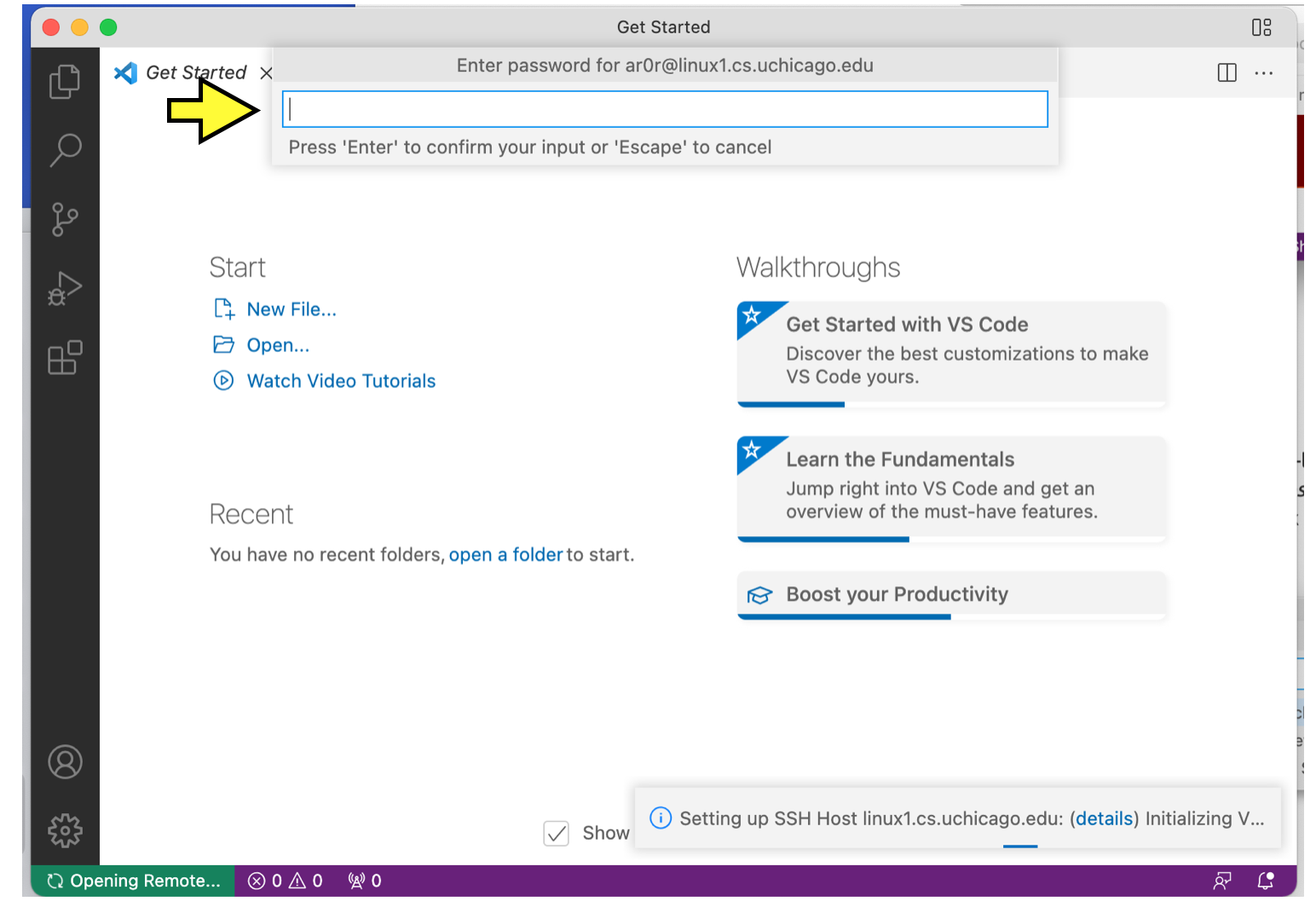
If the connection is not successful, you may be given an option to try again; click Retry.
If you succeed at connecting, there will be a green box in the lower-left corner of the window with the text SSH: LINUX_SERVER.
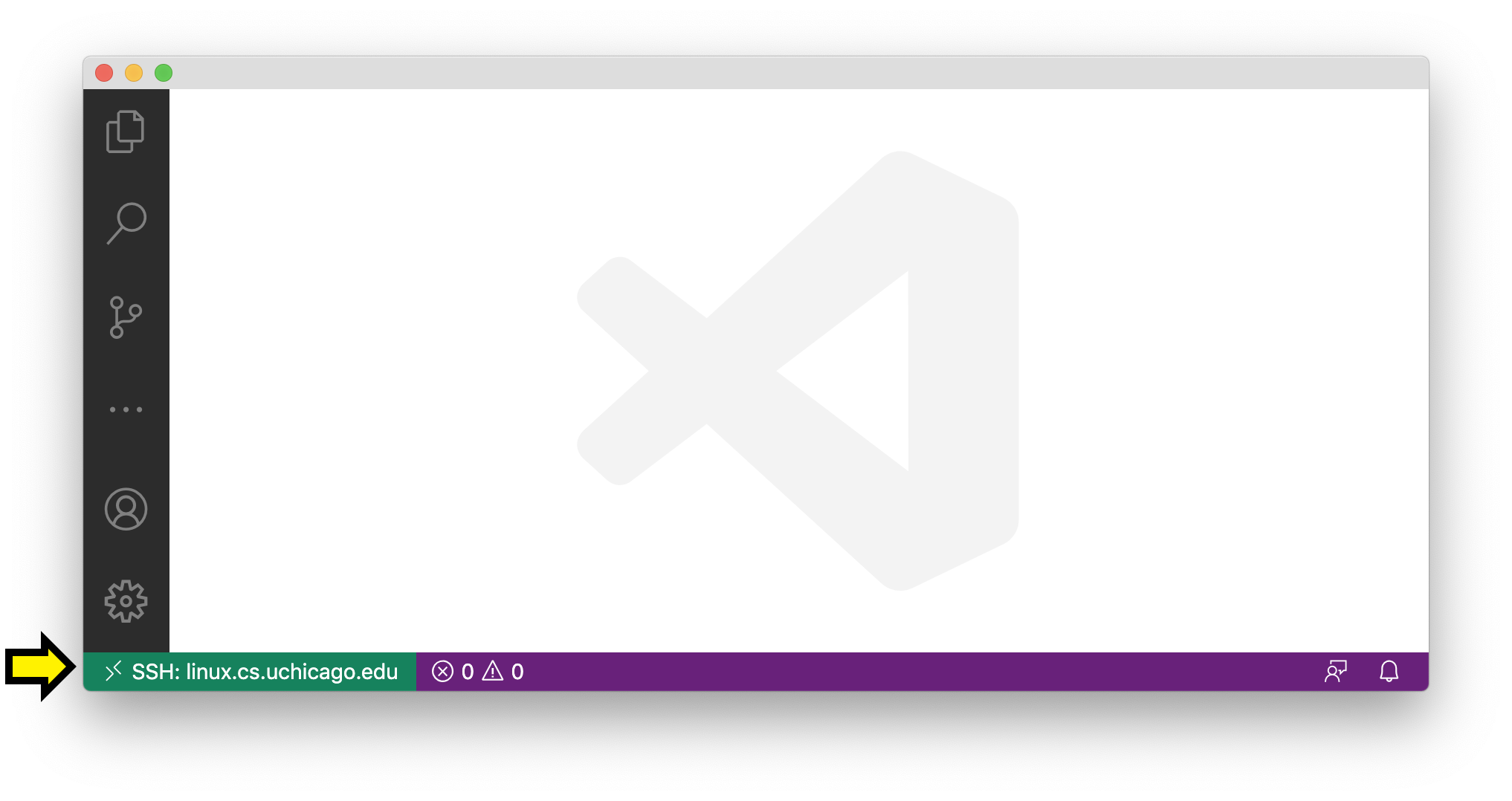
Getting Disconnected
If at any point you get disconnected from the server unintentionally, this will be indicated in the green box in the lower-left corner (with text such as “Disconnected from SSH”).
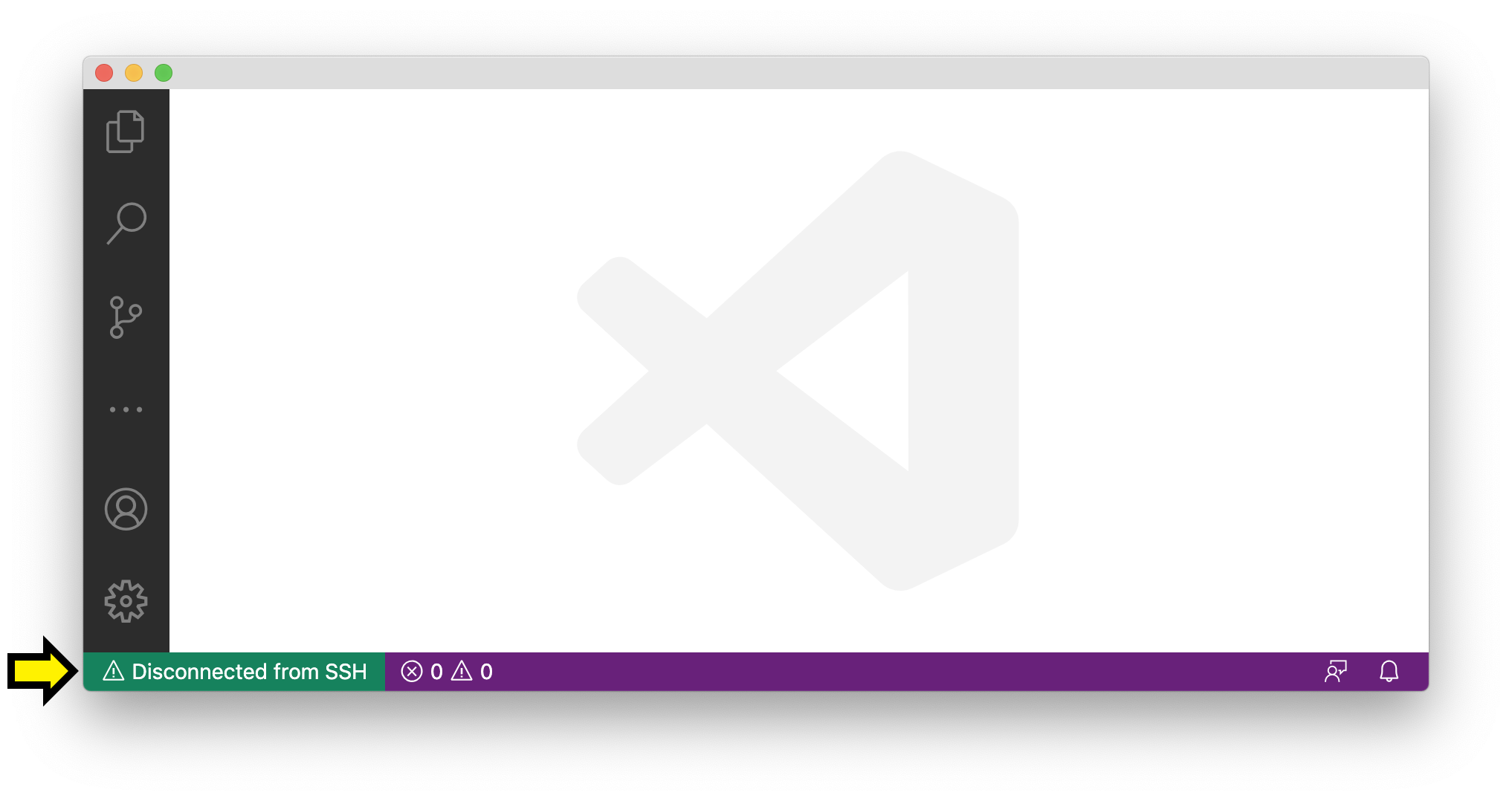
VSCode may show a pop-up asking if you want to reconnect. You can follow the prompts to reconnect. If that does not work, go back and follow the steps under Connecting again.
If you would like to disconnect from the server intentionally, click the green box in the lower-left corner with the text SSH: LINUX_SERVER, then click Close Remote Connection.
Using the terminal
Have your VSCode window open, and check that you are connected to SSH. Open the View menu from the menu bar and click Terminal (as a shortcut, you can instead press Ctrl-Backtick, even on macOS). This will split the window into two panes. The top pane will be empty for now (or may have some “welcome” text). The bottom pane has the terminal.
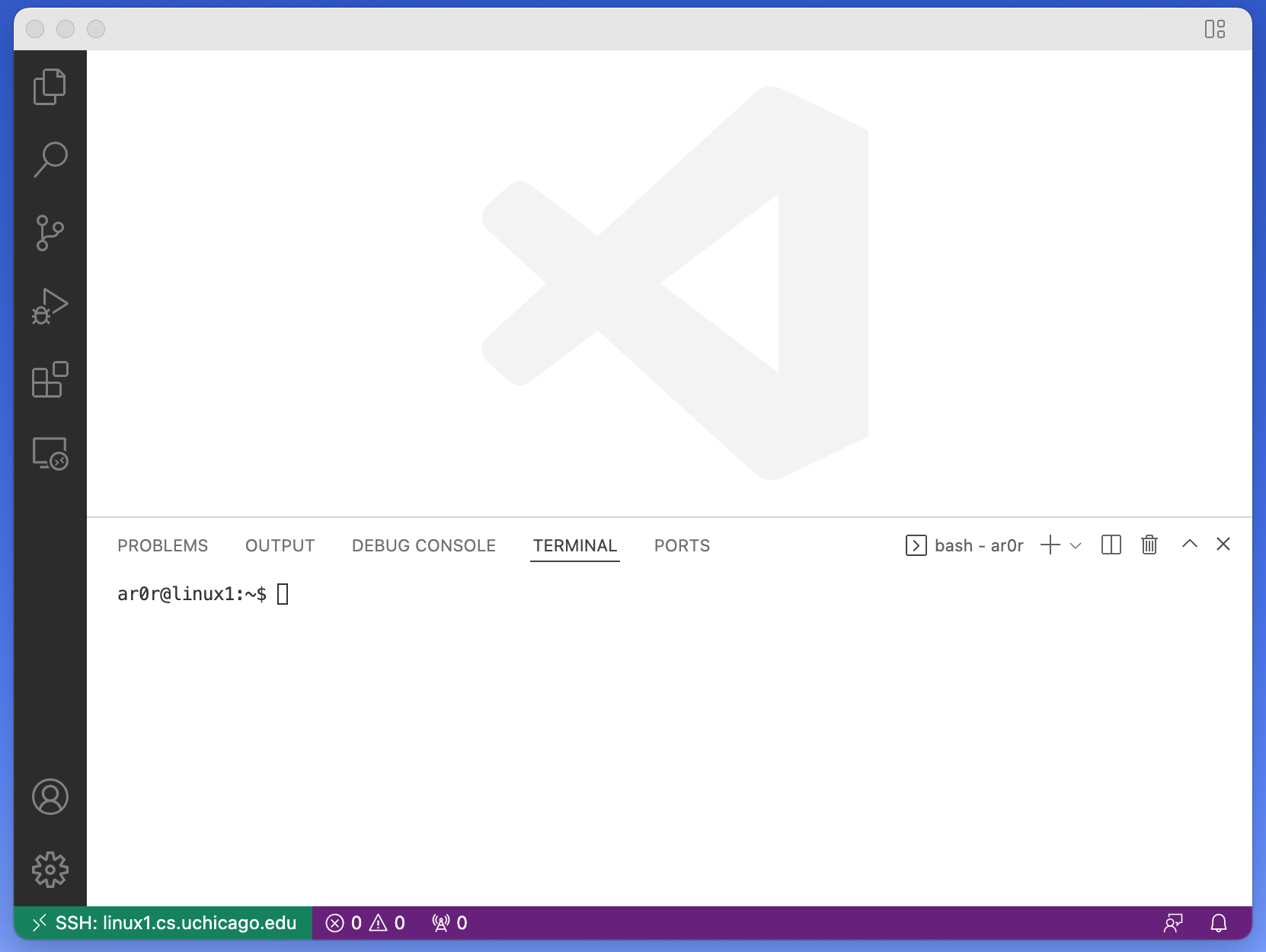
You will see the bottom pane has several tabs: Terminal, Debug Console, Problems, and Output (if your window is narrow, some of these may be hidden under a three-dots menu icon). We only care about Terminal for now, so make sure that is selected. To the right of these tabs, you will see a dropdown menu and some additional icons. You will use these later, but you won’t need them for now.
In the body of the bottom pane, you will see a Linux prompt of the form
username@computer:~$
Editing text files
You can open a file to edit using the file menu on VSCode or by
running the code command in the VSCode terminal window. For
example, to open a file called hello.c, you would run:
code hello.c
If you already have a file in your CS home directory named hello.c, you will see the file open in the top pane of your VSCode window. If you don’t already have a file named hello.c, you will see a new file in the top pane.
When you save a file (using the menu or Ctrl-s) while using with
VSCode via ssh, you are saving to the CS Linux servers on campus (it may
take a few moments). Make sure to save often!
Hint
The code terminal command works from within VSCode when you are connected to the campus Linux computers by SSH. In this case, you are opening files stored on the CS Linux severs on campus, not files stored locally on your own computer. While not necessary for this class, it is also possible to use the code command in your computer’s own terminal to open files on your own computer (or just to launch VSCode).
To enable this feature…
…on Windows: This feature is enabled by default. If you are familiar with Windows PowerShell or Command Prompt, you can open VSCode by typing
codeat the prompt. If you are not familiar with Windows PowerShell or Command Prompt, you do not need to learn them for this class; while they look a bit like the Linux terminal, they use different commands.…on macOS: Open VSCode, then press Command-Shift-P to open the Command Palette. Begin typing Shell Command: Install ‘code’ command in PATH, and click on the option when it appears. From this point on, you will be able to open VSCode from the macOS terminal by typing
code.
Troubleshooting
If you run into issues with VSCode and SSH, please make sure to check out the troubleshooting guide prepared by the CS Techstaff: https://howto.cs.uchicago.edu/techstaff:vscode
Passwordless SSH
You will be prompted for your password in VSCode every time you connect (or reconnect) to the CS Linux servers. If you would like to avoid this, you can set up passwordless SSH. See the instructions in Setting up Passwordless SSH section.